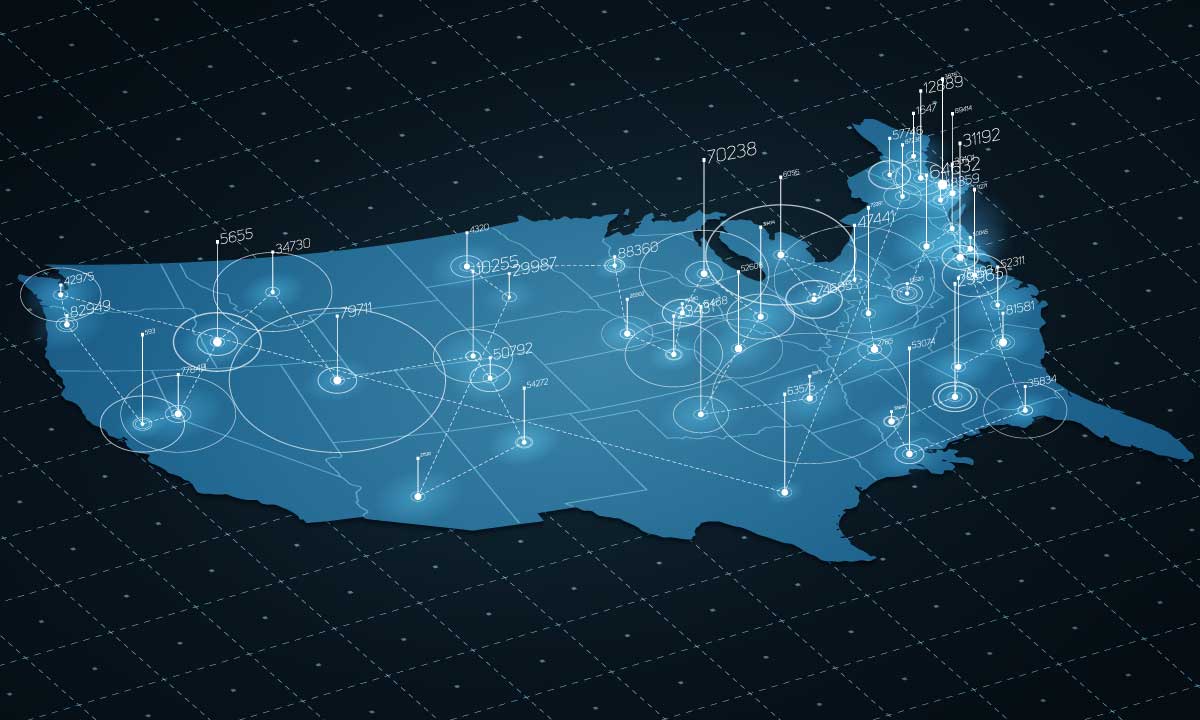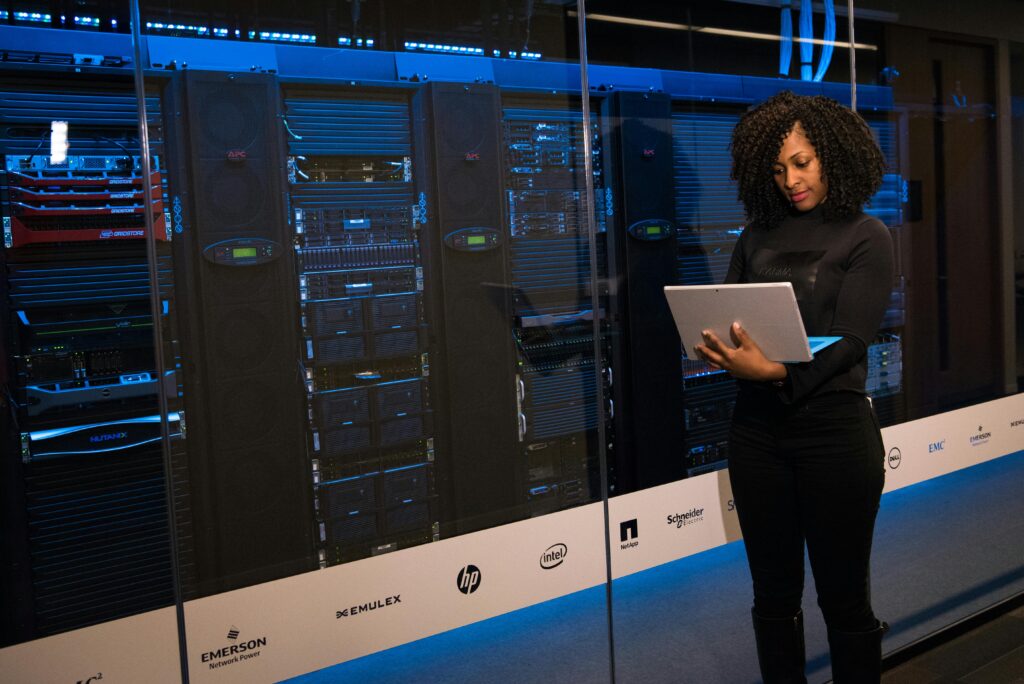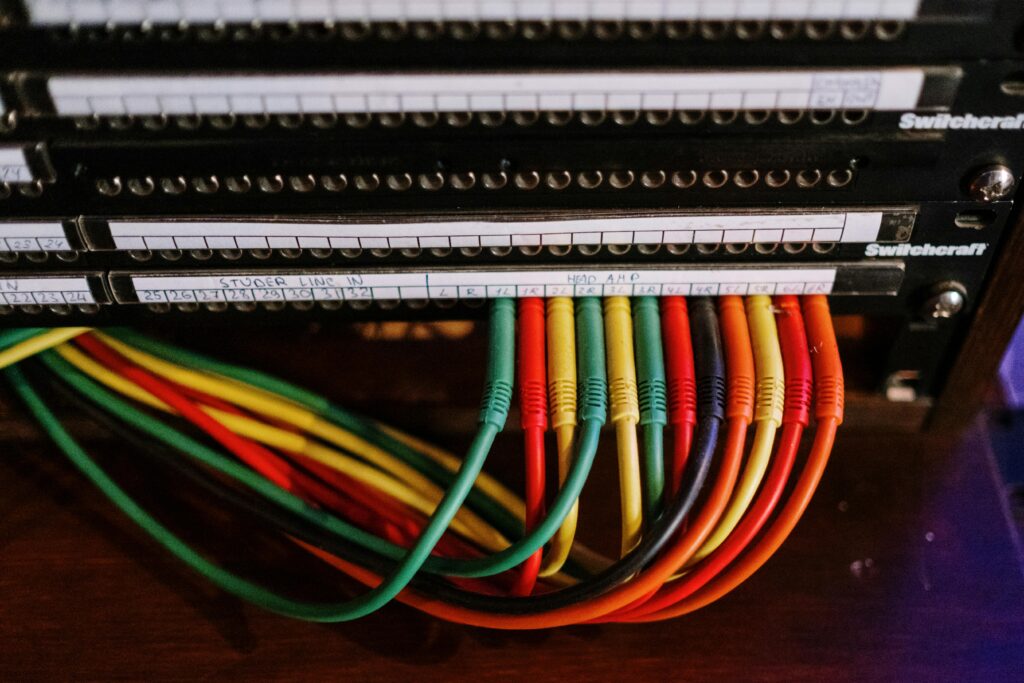Choosing where to locate a data center requires balancing many different priorities. We’re going to go through the biggest data center location considerations and show you some resources to get you started.
First we’ll start out with a warning about the dangers of not having a safe and secure location, then we’ll go into the more specific factors for choosing the location of a data center.
As you take a look through these resources keep an eye on North Dakota. It might be a great place to build a joint venture of a massive wind farm and data center. However, as you’ll see, later, North Dakota is only a good place to locate a data center for someone with the right goals.
Important Data Center Location Considerations for Safety and Security
First and foremost it is important that your data center is set up to minimize risk of downtime. Data centers support more critical functions across more devices than ever before. Regardless of what your data center is intended for, even a short outage will bring heavy expenses.
Here’s the estimated cost of downtime from enviromon.net:
Cost of Downtime = Lost Revenue + Lost Productivity + Cost to recover + Cost of intangibles
I think most of those categories are pretty self-explanatory, but what exactly is the ‘cost of intangibles’? These are related to lost customers, lost trust, and potential reputational damage.
How a company handles a downtime situation, how long it takes to restore afterwards, how well everything is restored. These all play a factor in how a company will come out of a downtime situation.
That being said, a report from 2016 found that data center outages on average cost close to $750,000 dollars.
Moral of the story: setting up your data center to avoid potential downtime issues is a top priority for a good data center location.
Avoiding Natural Disasters
Here is a graphic from the New York Times with safety from natural disasters for metro areas across the US:

Here is another map not focused on metro areas:

While most natural disasters are relatively rare, if you are in a risk zone it is generally only a matter of time before it will happen. Being adversely affected by a big weather or geological event is not something any data center can afford, especially not for any extended period of time.
All of the following are concerns: hurricanes, tornadoes, floods, lightning and thunder (anything that might interfere with power supply), volcanoes, earthquakes, tsunamis, blizzards, hail, fires, and landslides are all things to consider.
Doomsdays for Data Centers
Generally speaking, blizzards, hail, and thunderstorms are only going to be a potential threat to the power supply or the network. They should not be an issue for the data center itself.
Some threats like earthquakes, landslides, and tsunamis could potentially wipe a data center off the map and cause a complete loss of data and assets. This is for both the data center and their clients, making them important data center location considerations.
Earthquakes could be a bigger threat than you might think, as according to Time Magazine the danger of earthquakes is rising as the earth’s rotation slows down.
Seattle and the greater northwest region might at first seem to be a good area to locate a data center. This is due to their mild climate with a lack of climatic natural disasters. However, with Seattle overdue for a very large earthquake, building in this area is a very sizable risk.
An earthquake can completely destroy infrastructure, and that can mean downtime hits. This is even if the data center itself is still completely protected and otherwise serviceable.
There is a chance that the big earthquake doesn’t come for another 500 years, but there is also the chance that it comes in the next year.
It’s essentially playing geological roulette with your data center and every business that is reliant on it.
An earthquake could ruin the infrastructure of the area. It could also render the data center completely worthless without even damaging the data center itself.
A data center without power or network connection isn’t much of a data center.
The Eye of the Storm
There are very few places that are safe from all natural disasters. Calculating the best place to locate a data center comes down to what risks you are comfortable with.
IBM was looking to build their biggest data center ever and found that Kelowna, Canada was one of the safest places in North America.
It was suitable for a number of other reasons, but as far as safety goes it is a great spot.
Here is IBM’s assessment of the environment they chose:
Geologic surveys indicate that the Okanagan is at least 150 miles from the nearest earthquake zone. Climate experts also have said that the region’s location in the high desert makes it safe from other disasters such as floods, tornadoes and major storms.
Perhaps the only natural risk: wildfires, which ravaged the local countryside in the summer of 2003 but left most of the urban areas relatively unscathed.”- CIO
As you can see, this was a big part of their decision. We’ll get into some of the other things they considered later.
Power Supply
Reliability, Price and Proximity
Since power represents up to 70% of the total operating costs, many enterprise users and colocation operators focus their site selection on lower-cost power options. –Site Selection Group
These prices will vary within the state as well, as exact location relative to the power source(s) is very important. However, this will help to give a general idea of variation across the country:

*Data is from the Site Selection Group chart.
Every data center needs a lot of power, reliably. Here is best practices from Master data in motion:
They (data centers) should be ideally powered by two independent routes of energy coming through their own transformers. The energy goes through a substation through automatic transfer switch (APS) – with a diesel generator connected – and into the UPS units with their own battery modules.”
Since power is the single biggest cost of operating a data center, it is important to be in a place where power is cheap.
Another possibility that is becoming increasingly viable and economical is renewable power cources. Solar panels for example help make companies less dependent on power suppliers.
For now, most data centers choose to go with the systems already in place. However, even then it often makes sense to look to renewable sources:
While this energy is cheaper than traditional alternatives such as coal or oil—hydro power can be as low as 2 cents per kilowatt hour, compared to as much as 20 cents per kilowatt hour for other means —it’s also “greener,” meaning the process does not rely on renewable resources at all.
Furthermore, David Tarasenko, president and chief executive of IronDiamond, says that by virtualizing certain accounts, data storage providers can cut back on energy use by as much as 50 percent.” – CIO
Power Proximity
Data centers also want to be close to their supplies of power, as it significantly reduces the risk of having issues with transmission.
As you can see, Washington is at the top of the list, mostly due to its prolific hydroelectric power. Microsoft, Dell and Yahoo have already created data centers in Eastern Washington (close to the source of power, the Grand Coulee Dam).
In Eastern Washington it is also far enough away from the coast and the fault lines to have a decent margin of safety according to USGS (although not perfect):

As you can see from this map, the whole western third of the United States has at least some danger of earthquakes. However, the lower hazard areas are much less likely to get catastrophic damage.
If there were to be an earthquake big enough to cause problems for the Grand Coulee Dam and potentially ruin the dam… Obviously all of these data centers would be out of luck. That being said, the Grand Coulee Dam is massive. It is our understanding that even when the 100 year earthquake hits, such a failure is very unlikely.
Network Access: At Least Two Major Providers
Clearly having access to major network providers is a must for any data center. Generally they will always want to have at least two to hedge their bets and make them less reliant on each individual company.
Here’s a somewhat outdated map (from 2014, here is the FCC’s updated version where you search for an area) from the FCC showing the places with at least 2 broadband providers:

While there is certainly correlation between the two, there is not causation. The main question here is, what’s going on in North Dakota!?!?
They clearly have a very disproportionate amount of connectivity for the amount of people there. As you might have noticed North Dakota does have some danger of flooding in much of the state, but western North Dakota might have a perfect balance of opportunity for network connectivity and the potential to deliver cheap wind energy through a wind farm.
So why aren’t all data centers in places like North Dakota? Wind farms are not a very consistent supply of energy, so it would also need to be next to another reliable power source, as wind would only supplement the regular power used.
There’s other complications as well. People are important in a couple of ways. Qualified staff to run a data center and proximity to end users. We’ll take a look at those next.
Proximity to End Users and Skilled Laborers
Proximity to End Users
Being close to end users is almost always an important data center location criteria, mainly for latency reasons. By reducing the distance between the data center and its end users, the data center can provide faster response times. That being said, if low latency isn’t a primary need for your users as in some non-consumer application use-cases, this factor can be disregarded for other more important ones.

Here is a population density map of the United States:
For those cases where latency is a large factor, If you have a very specific population that will be using your data center, then proximity to their location should be a major consideration.
Proximity to Skilled Labor
Putting your data center in western North Dakota could cause you to have higher labor costs to keep skilled enough labor there. Nobody wants to live there and there is not already a qualified labor force to choose from. You may find your company paying a lot more than what you think is fair market price.
However, power is generally about 70% of costs for operating a data center. It still may be worth siting your data center in a place that has cheaper power. In the end you will probably come out way ahead, even if the employees cost more than the average data center. It is becoming easier to run data centers remotely, so less people will have to be present physically to manage the data center. Unfortunately for most, going completely remote is not feasible nor necessarily desirable.
A Good Balance of Power and Proximity to People
The IBM data center in Kelowna is a good example of balancing power costs, safety from natural disasters, and proximity to people. It is positioned toward the head of the Columbia River and uses hydroelectric power from a dam on the river at as low as 2 cents per kilowatt hour.
Kelowna itself has also started to get a decent size tech population and it is very close to Vancouver, British Columbia. This means other qualified IT help is close by for when they are hiring. Additionally, if they need temporary help, Kelowna is a 4 hour drive or a short flight.
As you might have noticed, the Columbia River is powering a number of important data centers, as downriver from Kelowna is the Grand Coulee Dam that powers the previously mentioned data centers in Eastern Washington for Microsoft, Yahoo, and Dell.
Real Estate
Big, Cheap and Close to ISPs and Power

Here’s the price per square foot of real estate across the nation:
For the full interactive map visit visualcapitalist.
The price of real estate is a one time cost, but it can still be a very significant one, especially for bigger data centers. The data center just built by IBM in Kelowna was 85,000 square feet and costed an estimated $100 million total.
Real estate costs are very important, but it needs to be recognized that in some cases spending extra money on real estate could be worth it to save money in the longer term with various operational costs or to minimize certain risks.
The potential revenues don’t matter if your data center gets wiped off the map or if you find yourself without power or network connectivity!
Colocation
If Building Your Own Data Center is Too Much
A Colocation is a facility where a company rents data center space & equipment from another company while they manage the servers and storage.
Depending on the needs of the company it can be a great option. Building allows a company to own as big of a part of a data center as they need for their purposes.
This will often make the most sense for companies that are not actually involved directly in data center management or a related field.
Conclusions
Where to Locate Your Data Center?
If you don’t happen to have your end users in western North Dakota or right next to a hydroelectric dam, the choice may not be so simple. This guide is meant to be a good start to give you the bigger picture.
If you know exactly where your end users are, then start looking for similar resources to these on a smaller level.
Some areas just aren’t going to be a good fit for data centers. Anywhere in the southeast that is frequented by hurricanes for instance is probably not a good thing.
If you do feel the need to put a data center close to end users in a not so ideal place just make sure to prepare and plan for the worst. That is something that neither you or your customers can afford to have happen.
There is no one right answer for where it is best to build a data center. It all depends on your business and data needs.
When it comes time to decommission your data center, contact exIT Technologies to get the most money for your old data center equipment.





